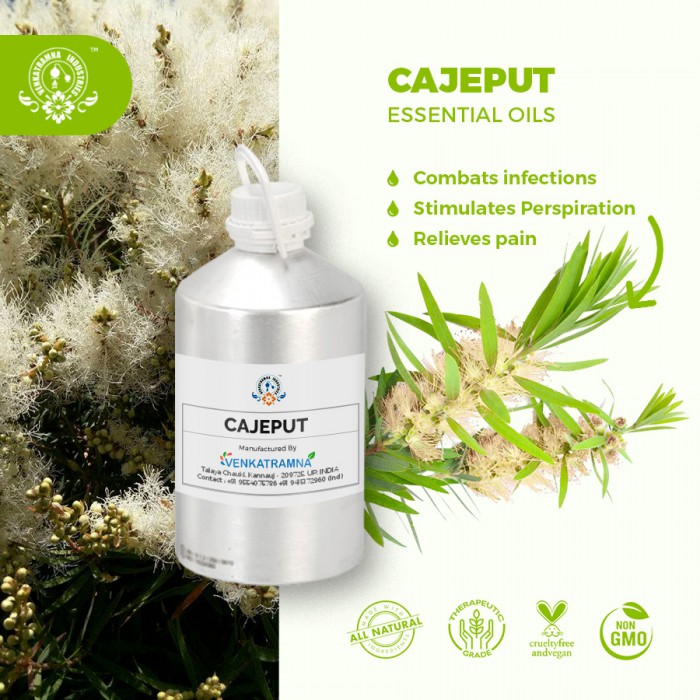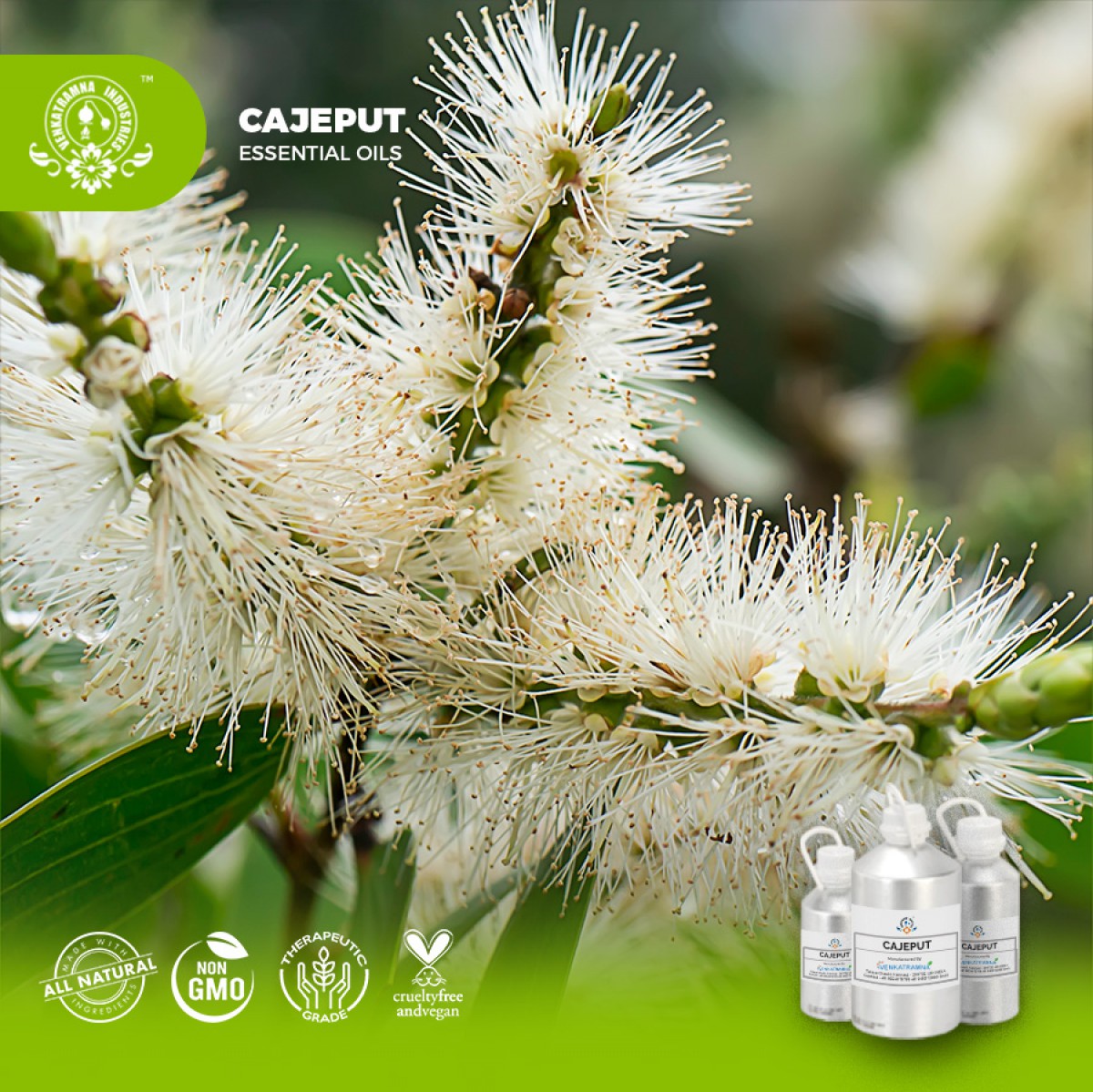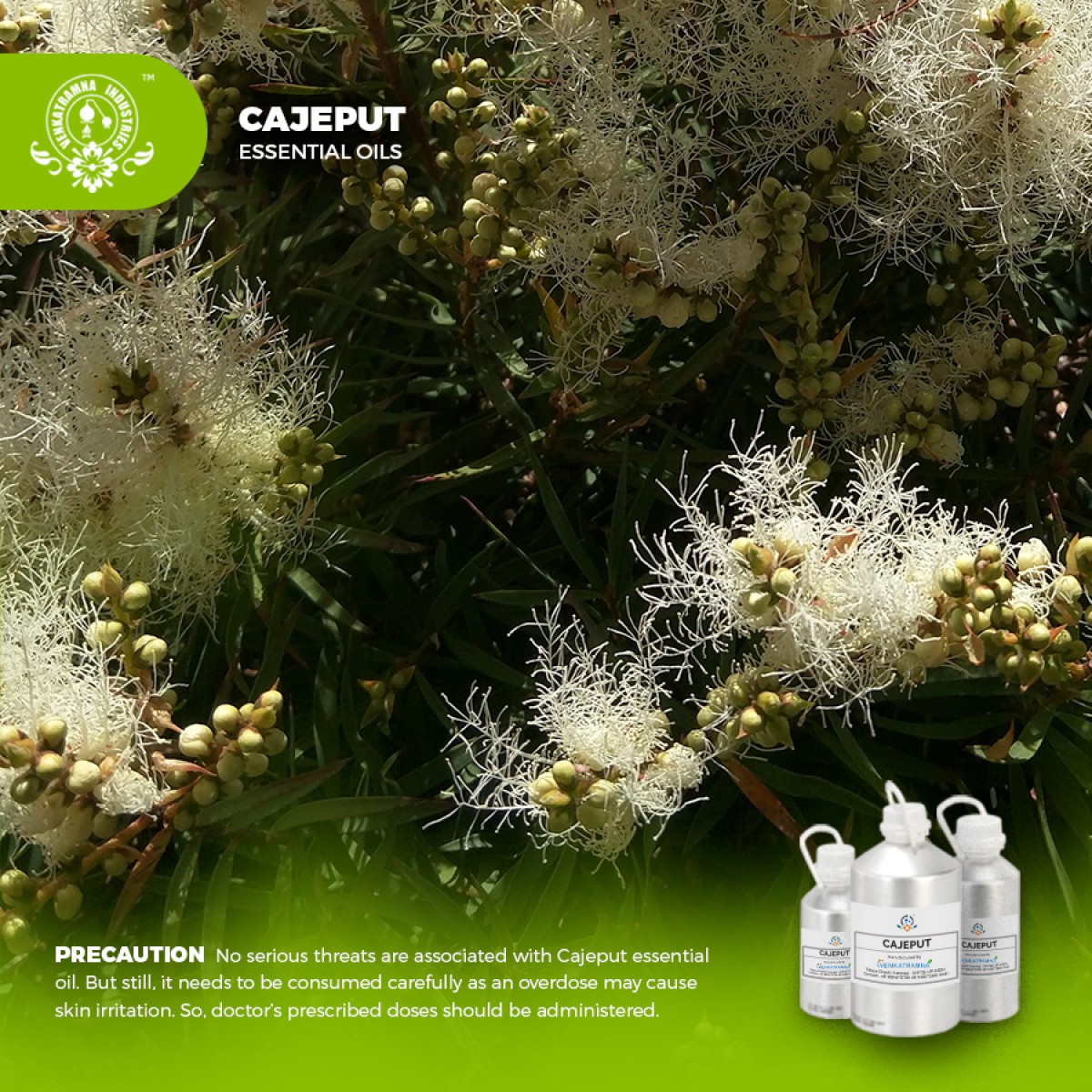Botanical Name : Melaleuca cajuputi (Melaleuca cajuputi Powell) Common name: Gelam, Read More
|
Botanical Name : |
Melaleuca cajuputi (Melaleuca cajuputi Powell) |
|
Common name: |
Gelam, Paper Bark Tree, Kayu Puteh, Tea Tree,
Paper-bark, Cajeput, Cajeput Oil Tree, White Tree, White Wood |
|
Plant family: |
Myrtacea |
|
Genus: |
Melaleuca |
|
Appearance/Color: |
A pale yellow,
sometimes with a green tint-white mobile liquid. |
|
Odor: |
Oil has a fresh, camphorous aroma resembling the combined
fragrances of camphor, rosemary, and cardamom, with a slight fruity note; a
middle note with a medium strength aroma (fresh, minty, camphor). |
|
Blends With: |
Cedarwood, clove
bud, labdanum origanum, rosemary, and thyme. |
|
Origin |
Vietnam |
M. cajuputi is one of
the 10 species that together form the M. leucadendra (L.)
(also often named M. leucadendron ) complex. Many early references
to M. leucadendra or M. leucadendron yielding
cajeput oil from Indonesia and Vietnam in fact refer to M. cajuputi .
It is often difficult to distinguish species within the complex, especially in
areas where they overlap, because distinctive characteristics also overlap.
Within the complex, M. cajuputi is most closely related
to M. viridiflora Sol. ex Gaertner and M.
quinquenervia (Cav.) S.T. Blake. Distinctive characteristics are: M.
cajuputi has leaves with petiole 3-11 mm long, blade mostly longer than 5
cm and less than 2.5 cm wide, old leaves densely dotted with glands, rather
thin in texture, with reticulations almost as prominent as the main veins and
young shoots with spreading hairs. M. viridiflora has leaves
with petioles 1-2 cm long, blades wider than 2.5 cm, very thick, young shoots
with appressed silky hairs. M. quinquenervia is like M.
cajuputi but its old leaves are not conspicuously dotted with glands,
not thin-textured and have obscure reticulations. It is Evergreen shrub or
usually single-stemmed tree up to 25(-40) m tall with an extensive root system,
sometimes with aerial adventitious roots. Bark layered, fibrous and papery,
grey to white. Crown fairly dense and wide, somewhat silvery in appearance;
smaller branches and twigs slender but not drooping, young shoots densely silky
hairy with spreading fine hairs up to 2 mm long.
M. cajuputi is a long-lived, moderately fast-growing tropical tree adapted to both waterlogged and well drained soils. On soils subject to prolonged waterlogging it develops aerial adventitious roots, which can form buttresses on the lower trunk. Like all melaleucas, it does not develop dormant buds and grows whenever conditions are favorable. After bush fires, it will regenerate by seed, coppicing and from root suckers.
DISCLAIMER
The complete range of conditions
or methods of use are beyond our control therefore we do not assume any
responsibility and expressly disclaim any liability for any use of this
product. Information contained herein is believed to be true and accurate however,
all statements or suggestions are made without warranty, expressed or implied,
regarding accuracy of the information, the hazards connected with the use of
the material or the results to be obtained from the use thereof. Compliance
with all applicable federal, state, and local laws and local regulations
remains the responsibility of the user.
The FDA has not evaluated the
statements on this website. No claims are made by Venkatramna Industries as to
the medicinal value of any products from vriaroma.com or by us. The information
presented here is for educating our customers about the traditional uses of
essential oils and is not intended to diagnose, treat, cure, or prevent any
disease. You are responsible for understanding the safe application of these products.
If you have any questions, please call or email us for further information.
As per NAHA guidelines, New Directions Aromatics (NDA) does not recommend
the ingestion of essential oils. It is imperative to consult a medical
practitioner before using Essential Oils for therapeutic purposes. Pregnant and
nursing women and those taking prescription drugs are especially advised not to
use this product without the medical advice of a physician. The oil should
always be stored in an area that is inaccessible to children, especially those
under the age of 7.
The oil is a common household
medicine, especially in South-East Asia, used internally for the treatment of
coughs and colds, against stomach cramps, colic and asthma. It is used
externally for the relief of neuralgia and rheumatism, often in the form of
ointments and liniments, and for the relief of toothache and earache. It is
also applied in treating indolent tumours. The oil is reputed to have
insect-repellent properties; it is a sedative and relaxant and is useful in
treating worms, particularly roundworm, and infections of the genito-urinary
system.
Cajeput Oil in Pharma
The leaves are used to distill
'cajeputi oil' or 'tea tree oil' which has medicinal and antiseptic uses such
as medical ointments. It is used to treat gout by the Burmese. in Southeast
Asia, it is used for relieving rheumatism and joint pains, as well as pain
killer. In Malaysia, it is used in the treatment of colic and cholera. In
Indonesia, the oil is used externally for burns, colic, cramps, earache,
headache, skin diseases, toothache and wounds. Internally, it is used to induce
sweating as a stimulant and as an antispasmodic. In Philippines, the leaves are
used to treat asthma.
Essence of Cajeput Oil
It is used as a flavoring in
cooking and as a fragrance and freshening agent in soaps, cosmetics, detergents
and perfumes.
COMMON USAGE
·
Combats infections
·
Relieves cough and congestion
·
Stimulates perspiration
·
Relives pain
·
Treats damage hair
·
Cures fever
·
Lowers flatulence
·
Bets as antiseptic
Aids in sinusitis
Ingredients:
|
S. No |
Key Constituents |
Strength (%) |
|
1 |
1,8-cineole |
76.58 |
|
2 |
a-pinene |
5.59 |
TOXICOLOGICAL
INFORMATION
Safety Summary
·
Hazardous: Essential oils high in 1,8-cineole
can cause CNS and breathing problems in young children
·
Contraindications Not Known
Organ Specific Effects
·
Adverse skin reactions undiluted cajuput
oil was not irritating to the skin of rabbits, mice or pigs; tested at 4% on 25
volunteers it was neither irritating nor sensitizing. It is non-phototoxic.
1,8-cineole present a low risk of both skin irritation and sensitization.
·
Reproductive toxicity the low
reproductive toxicity of 1,8-cineole, (p)-limonene, linalool and a-pinene
suggests that cajuput oil is not hazardous in pregnancy.
Systemic Effects
·
Acute toxicity (human) 1,8-cineole has
been reported to cause serious poisoning in young children when accidentally
instilled into the nose.
·
Acute toxicity (animal) cajuput oil acute
oral LD50 in rats 3.87 g/kg; acute dermal LD50 in rabbits>5 g/kg.
·
Carcinogenic/ anticarcinogenic: potential
no information found. 1,8-cineole is non-mutagenic and slows no evidence of
carcinogenesis.
·
Skin corrosion/irritation: May be irritating to
skin.
·
Serious eye damage/irritation: May be irritating
to eyes. Prompt rinsing and removal of the substance will avoid damage.
·
Respiratory sensitization: May cause irritation.
·
Reproductive toxicity: Not specified
·
STOT-single exposure: Not specified
·
STOT-related exposure: Not specified
·
Interactive effects Not specified
ECOLOGICAL
INFORMATION
·
Toxic to aquatic life with long lasting effect
Avoid transfer into the environment.
·
Results of PBT and vPvB assessment
o
PBT: Not applicable.
o
vPvB: Not applicable.
·
Persistence and degradability No further
relevant information available.
·
Bio-accumulative potential No further relevant
information available.
·
Mobility in soil No further relevant information
available.





 MSDS-Cajeput.pdf
MSDS-Cajeput.pdf




